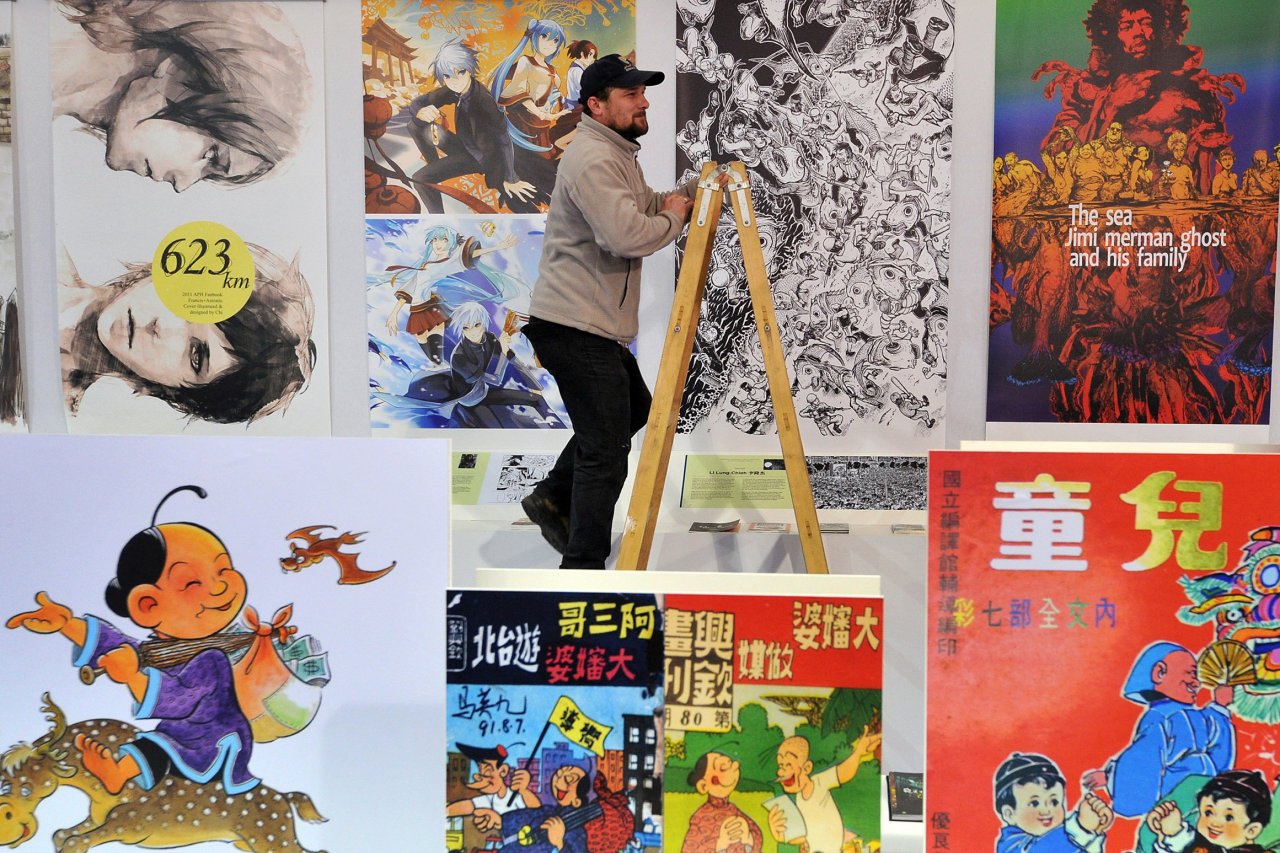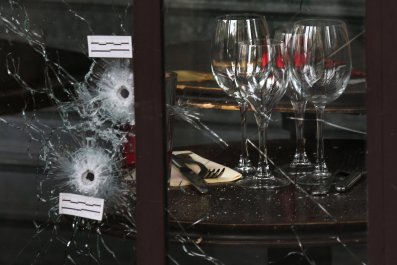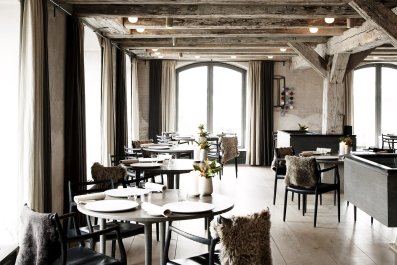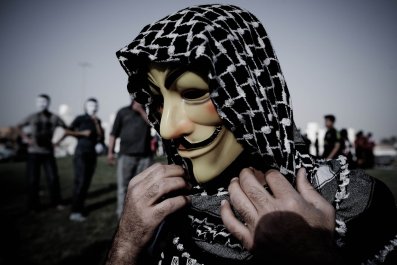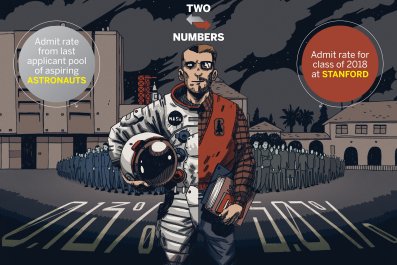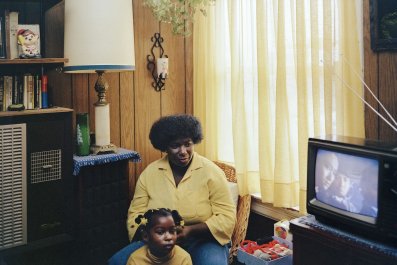France could use a reason to laugh right about now. Fortunately, in legendary comic book characters Asterix and Obelix, they have two reasons. First published in 1959, their comic series, The Adventures of Asterix, follows the two troublemaking Gauls as they resist occupation by the Romans through high jinks and magic. Two million copies of the 36th installment of their series, titled Asterix and the Missing Scroll, were printed in Paris in October of this year, with another 2 million printed in English and other languages. More will likely follow, given the last book featuring the characters, 2013's Asterix and the Picts, sold more than 5.4 million copies worldwide. Those numbers only added to the duo's expansive empire, which consists of nine animated movies, four live-action films starring Gérard Depardieu, a video game and even a Disneyland-style theme park in France.
Next to Japan and its ubiquitous manga, no country produces more comics than France. More than 5,000 are published every year and sold in the scores of bookshops across the country devoted to the genre. In the southwestern French town Angoulême, there's even the international city of comics (bande dessinée, or BD, in French), with a museum, a vast library, authors-in-residence, rotating exhibitions, an annual festival and an awards ceremony—the cartoon world's equivalent of Hollywood's Oscars.
The next logical step for French comic publishers, then, is establishing an international fan base. In July, Delcourt—France's largest independent graphic novel publisher—said it would release 150 titles in English over the next 12 months. They'll be offered in digital format in collaboration with ComiXology, a website that dominates the U.S. comic book market. Among them will be The Curse of the Wendigo , a WWI fantasy illustrated by The Walking Dead comic artist Charlie Adlard, and Come Prima ( As Before ) by Alfred, which follows two Italian brothers in the 1950s as they try to deal with their country's troubled past. ComiXology co-founder David Steinberger describes the partnership as the beginning of the French invasion into the English-language comic market. "It's high time that French comics take their rightful place," he says.
The newest star in the world of French illustrators feels especially prescient given the country's recent history. He's not a muscle-bound, spandex-clad Frenchie endowed with miraculous powers, fighting injustice or saving Gotham City from crazed ne'er-do-wells in the manner typical of the American superhero. He's Riad Sattouf, a mild-mannered, 35-year-old cartoonist and filmmaker born in Paris to a French mother and a Syrian father. His latest work, The Arab of the Future: A Childhood in the Middle East, 1978-1984, was published in English this October by Metropolitan Books in New York. The graphic memoir tells of Sattouf's unusual childhood or, as the blurb on the back cover puts it, "the true story of a blond child and his family in Gaddafi's Libya and Hafez Al-Assad's Syria."
The memoir has already sold 300,000 copies in French since it was published in May last year, and it won the top prize at the Angoulême International Comics Festival in February. Since then, it's been published in 14 languages. Riva Hocherman, Sattouf's U.S. editor, describes it as "a ground-up view of life as experienced by ordinary people in Libya and Syria in the 1980s, seen through the unquestioning perspective of a child, without judgment or explanation."
The follow-up volume was published in France in July this year and has already sold 200,000 copies. Two further volumes will follow Sattouf into his early teens. Though the author won't say much about them, he discloses that they will include the story of how he lost his flowing blond locks—featured prominently in the story's first volume, where they're described as "blowing in the wind like those of a Californian actress." Today, his hair and beard are jet black. "It was the end of paradise for me," he says with a grin.
Sattouf has become the toast of the burgeoning French comic world just as it takes the international stage, though he's been well known in the country for years. Among his previous graphic novels are My Circumcision, the plot of which is probably self-explanatory, No Sex in New York , a title chosen after he heard that the words sex and New York sell books, and Pascal Brutal , whose eponymous hero, a super macho Breton, inhabits a dystopian future. He has directed two films in France: 2009's The French Kissers , which earned positive reviews and strong numbers at the box office, and 2014's Jacky in the Women's Kingdom, which earned neither. For nearly a decade, he had a page in Charlie Hebdo called "The Secret Life of Youth," which featured vignettes of everyday events he'd observed on the streets of Paris. Unlike much of the paper, his cartoons were apolitical and inoffensive. He submitted them via email, didn't attend the weekly editorial meetings and left to work for another French weekly, Le Nouvel Observateur, before the shooting by two Islamist gunmen in January this year killed 10 of the paper's employees.
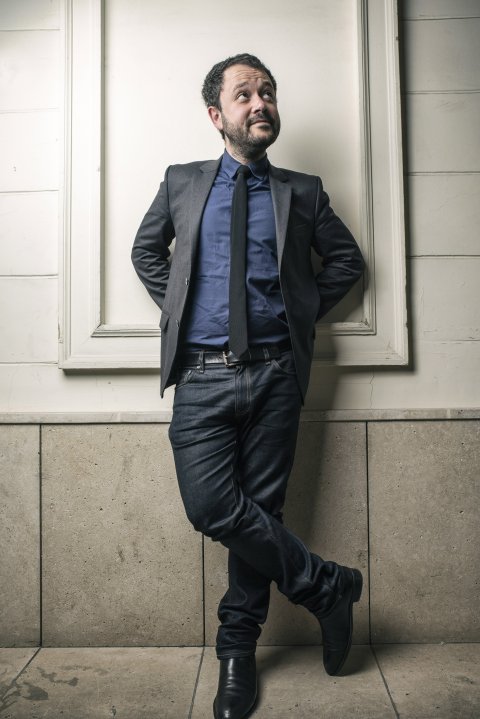
Sattouf thought for many years about telling the story of his childhood but was unsure how to shape it. "I'm not a big fan of autobiography," he tells Newsweek. "Some authors are too kind to themselves and their families. I like things to be raw, real." He wrote a first version of the story but was unhappy with it and put it aside.
Disaster motivated him to try again. When civil war broke out in Syria in 2011, members of his family in his father's ancestral village of Ter Maaleh near the city of Homs were close to a combat zone. Sattouf foresaw the coming chaos and set about helping them come to France, but getting permission from the French authorities was a bureaucratic nightmare. "I had a lot of difficulties," he explains. "I was very angry with France. I'd meet immigration officials, civil servants who would say, 'You really should do a comic book on this.' So I decided to tell the story from the beginning."
The book is not a polemic about the Middle East. Yet in remembered scenes through the eyes of a detached and occasionally melancholic child, truths about 1980s Libya and Syria emerge. Everything morphs as the setting changes, from the tone of young Sattouf's narration to the colors of the drawings: blue for France and the sea near his maternal grandparents' home in Brittany, yellow for sun-drenched Libya and pink for the laterite soil of Syria. It was important to work from memory, Sattouf says, and his recollections are vivid, sometimes sweet, occasionally shocking and stretching back to when he could only crawl.
On the cover of the first volume of The Arab of the Future is a realistic, detailed drawing of Muammar el-Qaddafi, in colonel's dress uniform and opaque, black sunglasses, looking out imperiously from a Libyan billboard. It's the image of the dictator that the infant Sattouf saw more than 30 years ago, of what he calls "an impressive, virile strongman—like a rock star." It's a departure from how Sattouf draws himself and his father (the central character in the book), who are also shown on the cover but in a harsh caricature, with big, bulbous noses, big hair and elastic facial expressions in classic cartoon style.
So who is the "Arab of the future"? Not Sattouf, it seems. "The idea of nationality is outdated, worm-eaten," he says. "My nationality is cartoonist!" The term comes from his father, he explains. The youngest child of a poor peasant family, Abdel-Razak Sattouf was the only one to receive an education, eventually earning a doctorate in history at La Sorbonne in Paris. An eternal optimist, he believed the Arab of the future must go to school, escape ignorance and achieve enlightenment. That way, he could match and even overtake France and the West by building a postcolonial, nationalist Arab utopia. As seen in the book, Sattouf's father was so eager to be a part of the dream that he turned down an appointment at Oxford University and a teaching position in Qaddafi's Libya. "When we are young, we think we can change everything," says Sattouf. "Then we fail."
"He's telling us the Arab dreams were fake. It was a hoax," says Karim Bitar, a senior fellow and Middle East specialist at the Institute for International and Strategic Affairs in Paris who has followed Sattouf's career. "He saw at an early age that the promise of a secular, authoritarian, nationalist utopia was a lie." During his childhood, authoritarian rulers tried to create secular states with secular laws. Sattouf's story illuminates why they failed, while contextualizing modern Islamist terrorism as, in part, a backlash after decades of dictatorships that suppressed religion in the Middle East. "The extreme secular nationalism that we see in Sattouf's work ceded the place to religious zeal," Bitar says. The book's explanations offer little in the way of comfort at this dark time in France's history, but they do provide an important historical perspective.
The Arab of the Future is not the first French graphic novel to seem prophetic. Persepolis tells in four volumes the story of its author, Marjane Satrapi, and her childhood in Iran during the country's eight-year war with Iraq. Its first volume was published in French in 2000 (with volumes two through four released over the next two years), but didn't get its first English translation until 2004—after the post-9/11 Iraq War had already begun. It resonated: Persepolis topped the U.S. graphic books best-seller list, and its 2007 animated movie adaptation was nominated for an Academy Awards.
Sattouf's graphic novels seem poised for a similar international takeover. "They are the most powerful means of expression," he says of comics. "They were the first: cave paintings of cattle and hunters, hieroglyphics in ancient Egypt. They are understandable by anyone, a universal language." And they're a language Sattouf speaks fluently.



